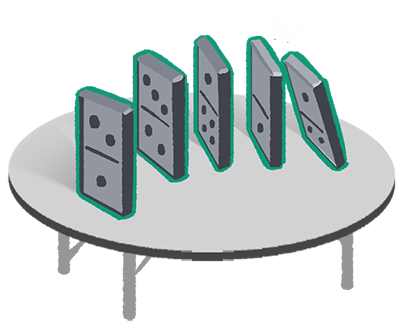RECOGNIZING MICROAGGRESSIONS TO SUPPORT UNBIASED COMMUNICATION

Discussions about stress bring a variety of experiences and ideas into the classroom. As you work through the Kids Have Stress Too! and Stress Lessons programs, you may find that some students have challenges understanding or accepting different perspectives about stress, and/or struggle with understanding how to respond to disclosures.
When engaging in these important conversations, it is important to remember intent [1] versus impact [2]. We may respond in a way we think is helpful, but the receiver may have an entirely different experience. In a classroom, student safety is created when they feel validated and supported during disclosure.
The following section defines microaggressions and gaslighting and outlines ways educators can respond to them.
Microaggressions
| What does it mean | Microaggressions are everyday snubs and insults that marginalized groups face. They are often very subtle comments or actions that come from implicit bias and/or stereotypes[3] |
| What can it look like | “The way you’ve overcome your disability is so inspiring” “You’re a little young to understand how the world works” ““There is only one race, the human race.” |
Microaggressions in the classroom[4]
- Hosting debates in class that place students from groups who may represent a minority opinion in class in a difficult position.
- Expecting students of any particular group to ‘represent’ the perspectives of others of their race, gender, etc. in class discussions or debates.
- Denying the experiences of students by questioning the credibility and validity of their stories. ●Using heteronormative[5] metaphors or examples in class.
- Forcing students with non-visible identities to “out” themselves or discuss them publicly. For example: telling a student with autism to speak about learning supports without first asking.
- Ignoring student‐to‐student microaggressions, even when the interaction is not course‐related. ●Making assumptions about students and their backgrounds.
- Having students engage in required reading where the protagonists are always white.
Microaggressions can occur anywhere and at any time. People can intentionally – and sometimes unintentionally – communicate a bias towards historically marginalized groups in their everyday comments and interactions[6].
Conversations about identity-based stress are essential to affect change, but they’re hard and uncomfortable and can lead listeners to want to respond in ways to try to uplift the other individual. Unintentionally they may respond based on their individual bias that results in a microaggression to the receiver.
Example:
Student: I’m stressed because I don’t know what to wear to the dance. Everything I like, I don’t think my parents will approve of…
Microaggression: I didn’t even know you would be allowed to go to the dance…isn’t it against your culture?
The example above is a microaggression because the response is based off an implicit bias of assuming someone’s culture does not allow certain activities. The impact of the message can feel like you don’t belong, or you’re not welcomed.
Microaggressions are harmful because they can normalize intolerance or prejudices of other people and communities.
Ways educators can address microaggressions
- What do you mean by that? Could you explain what that means?
- Use I-messages to help others process the impact I felt … when you said … and it …. (describe the impact on you)
- Ask if they can reframe their statement
Could that be said in a different way?
Remember: Each of us is prone to making mistakes, and we are all capable of committing microaggressions. If you commit a microaggression, it does not necessarily mean you are a bad person, but rather that you need to be more aware of your biases and their consequences. To create a more harmonious society, we must work together on these issues.
[1] What a teachers intends to say in the conversation ( where they are coming from)
[2] What meaning comes off when the teacher makes a comment
[3] The Micropedia of Microaggressions – the first encyclopedia of microaggressions. (2021). The Micropedia. https://www.themicropedia.org/#/entry/c76d4f28-55b3-4214-804f-1e2673d7bda5
[4] Most examples taken, with slight adaptations, from Microaggressions in the Classroom University of Denver, Center for Multicultural Excellence, by former students Joel Portman, Tuyen Trisa Bui and Javier Ogaz; and Dr Jesús Treviño, former Associate Provost for Multicultural Excellence
[5] of, relating to, or based on the attitude that heterosexuality is the only normal and natural expression of sexuality (Merriam-Webster Dictionary, 2022)
[6] The Micropedia of Microaggressions – the first encyclopedia of microaggressions. (2021). The Micropedia. https://www.themicropedia.org/#/entry/c76d4f28-55b3-4214-804f-1e2673d7bda5